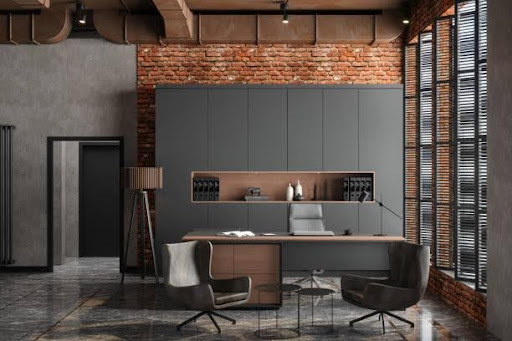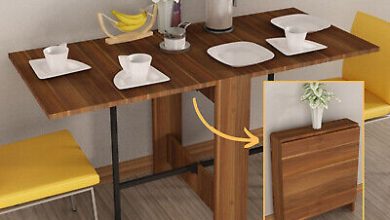Introduction to Desk Table Design
In the modern world, where remote work and freelancing are becoming increasingly prevalent, the importance of a well-designed workspace cannot be overstated. At the heart of any productive workspace lies the desk table – a functional yet often overlooked piece of furniture. Desk table design goes beyond mere aesthetics; it encompasses ergonomics, functionality, and efficiency. In this article, we delve into the intricacies of desk table design, exploring the factors that contribute to creating the perfect workspace.
The Evolution of Desk Table Design:
The history of desk tables is rich and varied, reflecting changes in technology, culture, and ergonomic understanding. From the ornate writing desks of the Victorian era to the sleek, minimalist designs of the digital age, desk tables have undergone significant transformations.
Early desk tables were primarily utilitarian, serving as platforms for reading, writing, and administrative tasks. However, as the industrial revolution took hold, desk tables became more specialized, with compartments for storing documents and stationary.
In the 20th century, with the advent of modernist design principles, desk tables evolved to emphasize simplicity and functionality. Designers like Charles and Ray Eames championed ergonomic principles, paving the way for adjustable-height desks and chairs that prioritize user comfort.
Today, desk table design continues to evolve in response to changing work habits and technological advancements. Standing desks, convertible desks, and modular desk systems are just a few examples of innovative designs that cater to the diverse needs of modern workers.
Ergonomics: The Foundation of Productivity:
Central to effective desk table design is ergonomics – the science of optimizing the workspace to promote health and productivity. A well-designed desk table should support proper posture, reduce strain on the body, and accommodate the user’s unique preferences and work habits.
Key ergonomic considerations include desk height, chair compatibility, monitor placement, and keyboard positioning. Adjustable-height desks allow users to alternate between sitting and standing, reducing the health risks associated with prolonged sitting.
Furthermore, cable management systems help keep the workspace tidy and organized, minimizing clutter and distractions. Incorporating ergonomic accessories such as monitor arms, keyboard trays, and footrests can further enhance comfort and efficiency.
Functionality: Balancing Form and Purpose:
While aesthetics certainly play a role in desk table design, functionality should always take precedence. A beautifully crafted desk table is of little use if it fails to meet the user’s practical needs.
Considerations such as surface area, storage capacity, and cable management are essential for optimizing functionality. A spacious desktop provides ample room for spreading out documents, while integrated storage solutions keep essential items within easy reach.
Modular desk systems offer flexibility, allowing users to customize their workspace according to changing requirements. Whether it’s adding extra shelving, integrating charging stations, or incorporating built-in lighting, modular designs empower users to create a workspace that suits their individual preferences.
Efficiency: Streamlining the Work Process:
In today’s fast-paced work environment, efficiency is paramount. A well-designed desk table should facilitate smooth workflow and minimize distractions, enabling users to focus on the task at hand.
Intuitive cable management systems prevent tangled wires and ensure easy access to power sources and peripherals. Built-in charging ports and USB hubs eliminate the need for unsightly adapters, keeping the workspace clutter-free.
Moreover, thoughtful placement of accessories such as desk lamps, pen holders, and document trays enhances efficiency by promoting organization and accessibility. By reducing the time spent searching for tools or adjusting equipment, a well-designed desk table maximizes productivity and minimizes frustration.
The Psychology of Workspace Design:
Beyond its practical utility, modern able design can also have a significant impact on the user’s psychological well-being and creativity. Studies have shown that the physical environment can influence mood, motivation, and cognitive function.
Natural light, greenery, and ergonomic furniture contribute to a positive work environment, fostering creativity and reducing stress. Incorporating elements of biophilic design, such as wood accents and plant life, can create a connection to nature, promoting a sense of calm and tranquility.
Furthermore, personalization plays a crucial role in fostering a sense of ownership and belonging. Allowing users to customize their workspace with photos, artwork, and mementos can enhance comfort and morale, leading to increased job satisfaction and productivity.
Conclusion:
In conclusion, desk table design is a multifaceted endeavor that encompasses ergonomics, functionality, efficiency, and psychology. By prioritizing user comfort, optimizing workspace organization, and fostering a positive environment, designers can create desk tables that enhance productivity, creativity, and overall well-being. Whether it’s a sleek, minimalist workstation or a cozy, personalized nook, the perfect desk table is a reflection of its user’s needs, preferences, and aspirations. As we continue to embrace new technologies and work paradigms, the evolution of desk table design will undoubtedly shape the future of workspaces for generations to come.





